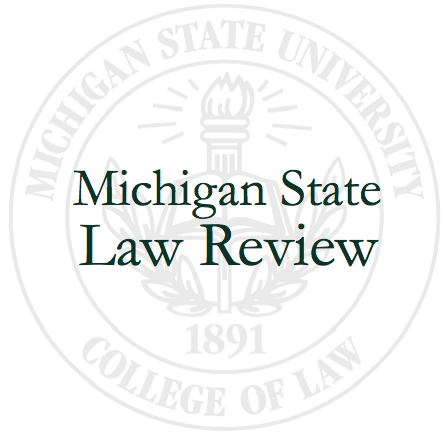Is Social Security Really just the World’s Largest Ponzi Scheme?
By: Emily Turbiak
At nineteen, I received my first paycheck working retail during the winter holiday season. I was super excited to pick up my check after working long hours. However, I was sorely disappointed to notice my paycheck was less then I anticipated. “Who is FICA? And why are they taking money from my check?!” An elderly gentleman explained to me that most of the FICA tax goes into a Social Security fund, which in turn pays checks to retirees (like him). I was suspicious of the legality of such a government program—something seemed off . . .
Franklin Delano Roosevelt signed the Social Security Act in 1935. The modern Social Security program pays retirement benefits to qualifying retirees. The FICA tax income collected from current workers’ paychecks supports the payment of the benefits to the retirees.
. . . Aha! Didn’t Bernie Madoff get in trouble in 2009 for a similar investment scheme where he recruited new investors in order to pay old investors? Yes, and no. Bernie Madoff did plead guilty to operating a Ponzi scheme with over $50 billion in investments from thousands of investors. However, the Social Security program is not by definition a Ponzi scheme.
Black’s Law Dictionary defines a Ponzi scheme as
[a] fraudulent investment scheme in which money contributed by later investors generates artificially high dividends or returns for the original investors, whose example attracts even larger investments. Money from the new investors is used directly to repay or pay interest to earlier investors, . . . without any operation or revenue-producing activity other than the continual raising of new funds.
The court in In re Taubman, 160 B.R. 964, 978 (Bankr. S.D. Ohio 1993), described additional specific attributes of a Ponzi scheme: “a Ponzi scheme is a fraudulent investment arrangement in which returns to investors are not obtained from any underlying business venture but are taken from monies received from new investors. . . Typically, investors are promised high rates of return, . . . and initial investors obtain a greater amount of money from the Ponzi scheme than those who join the Ponzi scheme later.”
So, is Social Security a giant Ponzi scheme?
Even though Social Security pays earlier investors from money invested by new investors (me), this is the only element that it meets. Furthermore, it’s arguable whether or not people paying into Social Security can be called investors. The definition of an investor is “a person who spends money with an expectation of earning a profit.” (Black’s Law Dictionary). The payment you receive at retirement is calculated based on your 35 highest years of income. The people who make a “profit” off of their Social Security “investment” are those who live longer than the actuaries expected. The initial expectancy is to recuperate the amount you paid into Social Security.
Also, the expectation of profiting off Social Security is reduced by the fact that Social Security’s costs have exceeded the tax and non-interest income since 2010. The Trustees expect this to continue through 2023 (with the old-age, survivor, and disability insurance costs exceeding noninterest income through 2088). The reserves for the old-age and survivors insurance are expected to deplete in 2034. At time of depletion, the income and trust funds would pay 77 percent of the scheduled benefits.
The projections are based on intermediate assumptions in the Trustees Report, which recommends lawmakers to address the projection shortages soon (much like they did in 1994).
I can collect full benefits at age 67 in 2056. Without legislative action, I wonder what the expected payout percentage will be then. Therefore, Social Security is not a profit-seeking investment for me. I do not expect a high-rate of return on my “investment.”
Furthermore, the Social Security program lacks the fraud element. There is no inherent deception in the program. It is a social policy program that has been transparent about its goals, and about how it is accomplishing its goals. Ponzi victims are not aware of the pyramiding scheme until the Ponzi scheme implodes. Also, the underlying business venture of Social Security (something that lacks in a Ponzi scheme) is the promotion of economic-security policies.
Moreover, the average length of a Ponzi scheme is 5.3 years; whereas, Social Security collected first collected income in 1937, and made its first payment in that same year (a one time payment of 17 cents!). http://www.ssa.gov/history/hfaq.html.
In conclusion, it is my opinion that Social Security is not a giant Ponzi scheme. However, it is a program that needs legislative tweaking. With that being said, when I am back in the working world, I plan to take advantage of any 401(k) program my employer offers, especially if it has a matching policy.
For more about the history and current operations of the Social Security Administration, see http://www.socialsecurity.gov.
For more about Bernie Madoff’s scheme, see http://www.forbes.com/sites/jordanmaglich/2014/02/12/a-Ponzi-pandemic-500-Ponzi-schemes-totaling-50-billion-in-madoff-era/.
Bernie Madoff’s criminal complaint, http://www.justice.gov/usao/nys/madoff/criminalcomplaint.pdf.
For the 2014 Trustees Report, see http://www.ssa.gov/oact/TR/2014/tr2014.pdf
